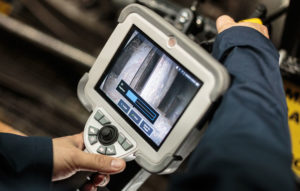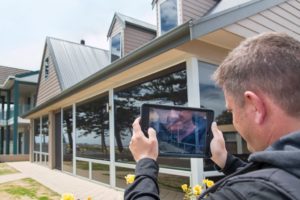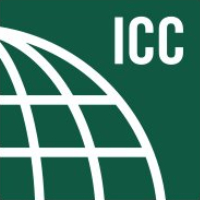
Considerations for virtual and remote inspections
 Code departments are adapting to ensure that they can continue to perform their public safety mission while protecting code officials, the construction workforce and the public at large from the spread of COVID-19. To support our members at this time, the International Code Council has compiled important considerations and a set of potential solutions code departments should think about as they navigate these uncharted waters.
Code departments are adapting to ensure that they can continue to perform their public safety mission while protecting code officials, the construction workforce and the public at large from the spread of COVID-19. To support our members at this time, the International Code Council has compiled important considerations and a set of potential solutions code departments should think about as they navigate these uncharted waters.
The options offered here are intended to address the short-term needs for virtual and remote inspections for jurisdictions that do not currently have them. Upon conclusion of the pandemic, code departments are encouraged to consider more permanent, formalized solutions based on the experiences and lessons learned.
While the content presented here is general in nature, code departments know their local conditions and are aware of state-specific requirements including stay-in-place orders, interpretations, and waiver procedures. Code Council chapters and building associations can be important sources of local information. The Code Council has also assembled resources on its Coronavirus Response Center.
Always abide by the recommendations of local health officials, the U.S. Centers for Disease Control and Prevention (CDC), and other national and international health authorities.
General considerations for remote operations
- Communicate new procedures through various channels (website and emails) to relevant groups (chapters and industry groups). Update your website frequently to address frequently asked questions.
- Communicate new procedures to users through various channels (website, emails, postings, chapter outreach, industry groups). Update your website frequently to address common questions.
- Adopt basic online security practices (e.g. don’t open .exe files, use virus scanning software). Your government’s IT department can provide guidance.
- Ensure adherence to record-keeping rules to assure that no information is lost and inspection information is accessible as projects proceed.
- Consult with your legal counsel to assure compliance with all federal, state and local requirements.
- Consult your existing permitting software provider (if you have one in place) to determine what services they can provide and how information from virtual and remote inspections can integrate with your existing system. If you do not have one in place, you can contact the International Code Council’s Community Development Solutions for help.
- Ensure that remote staff have access to the codes and standards they may need. The Code Council’s Digital Codes Library offers online access to all ICC model codes and standards and most state codes.
Setting up a virtual inspection process
 Determine a list of project types that can be virtually inspected. For example, Los Angeles County has identified the following as eligible for virtual inspections: smoke and carbon monoxide detectors, photovoltaic systems, electrical panel changeouts, water heaters, HVAC changeouts, sewer connections, temporary power poles, demolitions, window replacement, pad footings, gas lines, patio/decks, re-inspections, and re-roofs. Some projects are not conducive to virtual inspection currently. Where in-person inspections are required, personal protection guidance from health authorities should be followed.
Determine a list of project types that can be virtually inspected. For example, Los Angeles County has identified the following as eligible for virtual inspections: smoke and carbon monoxide detectors, photovoltaic systems, electrical panel changeouts, water heaters, HVAC changeouts, sewer connections, temporary power poles, demolitions, window replacement, pad footings, gas lines, patio/decks, re-inspections, and re-roofs. Some projects are not conducive to virtual inspection currently. Where in-person inspections are required, personal protection guidance from health authorities should be followed.
The department should determine which live video applications it will use. Options include Google Duo, Facetime, Skype, Zoom, WhatsApp and WebEx. Some services may only work on some types of phones (e.g., Apple Facetime) and some may require the download of stand-alone apps while others can operate directly from any web browser.
Steps for conducting a virtual inspection:
Contractor obtains permit and completes project (see Maintaining Building Safety During the COVID-19 Pandemic: Considerations for Moving Permitting and Plan Review Online).
- Contractor requests a virtual inspection with inspector via phone, email or web portal. The contractor should provide the project address, permit information, type of inspection requested, and contact information.
- Inspector confirms that the project is of a type that can be virtually inspected, and the inspector and contractor decide on a date and time. Some live video apps have an integrated scheduling feature.
- At the scheduled time, the inspector and contractor join the virtual meeting. The contractor turns on the video. The inspector has the option of turning on video.
- The inspector requests the contractor to point the camera at pertinent parts of the installation and take
- measurements the inspector would have performed in-person. Tips on optimizing video inspection process:
Contractor should fully charge phone or tablet.
Turn off notifications to improve quality of video connection.
Avoid virtual private networks (VPN), which can reduce video quality.
Hold the camera in place until the inspector directs the camera elsewhere.
Contractors should show street signs and house numbers or otherwise confirm the address.
- If needed, the inspector sends the contractor necessary corrections via email or web portal. For re-inspections, another video inspection may be required, or the inspector could accept photos showing corrections.
- The inspector approves installation and updates records.
What the contractor needs for virtual inspections
- A smartphone or tablet. A laptop with a webcam could work but it is less maneuverable and requires a wi-fi connection.
- Access to the live video apps selected by the department.
- A steady internet connection. The contractor can use the homeowner’s wi-fi in areas with poor cell phone connectivity.
- Tools necessary to conduct the virtual inspection. Required tools should include a tape measure, flashlights and level. When setting the appointment, the inspector should inform the contractor if additional tools are required for the project.
Additional considerations:
- Consider creating inspection checklists for specific project types and sharing them with contractors.
- Use tools like Google Maps and GIS to review the project site remotely.
- Consider how the inspection and final results will be captured. Consider retaining screen captures or limited video clips of essential steps in the inspection process. Should the inspection approval and associated documents indicate that the inspection was conducted virtually?
- How will you handle third-party inspections? Do they need to comply with the established COVID-19 protocols?
- Will an in-person follow-up site visit be necessary for locations that had a remote inspection?
- Compare notes across the department. Those conducting remote inspections should meet regularly to share tips, address challenges and improve the process.
- Document lessons learned to support potential long-term establishment of virtual inspection processes.
- Establish a scheduling process to avoid double-booking inspectors. Shared Outlook or Google calendars are options.
- Determine whether a homeowner release is needed to conduct a virtual inspection.







